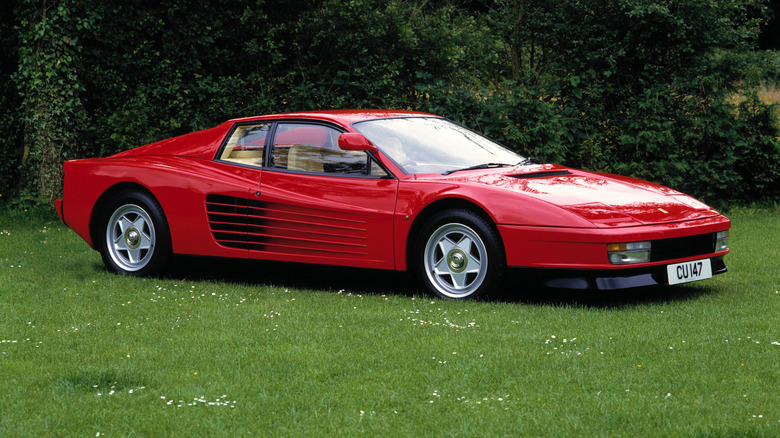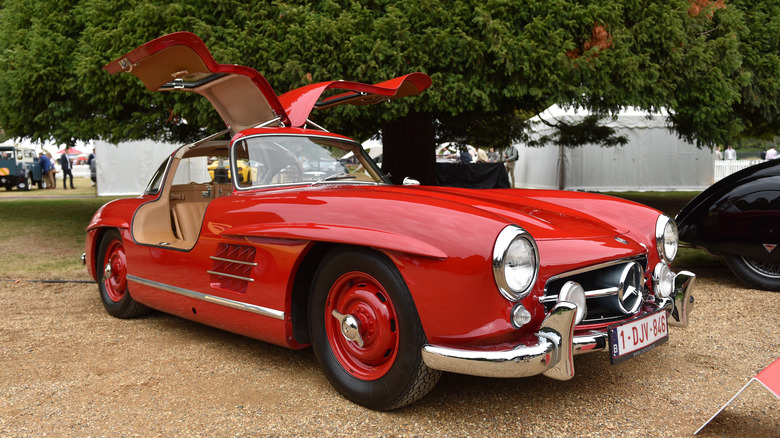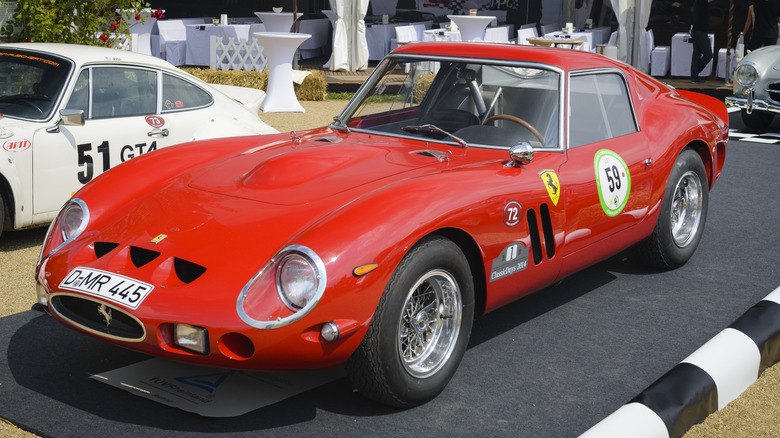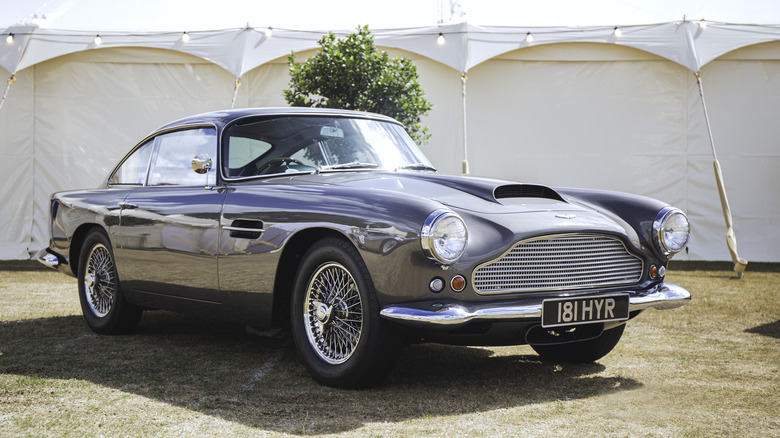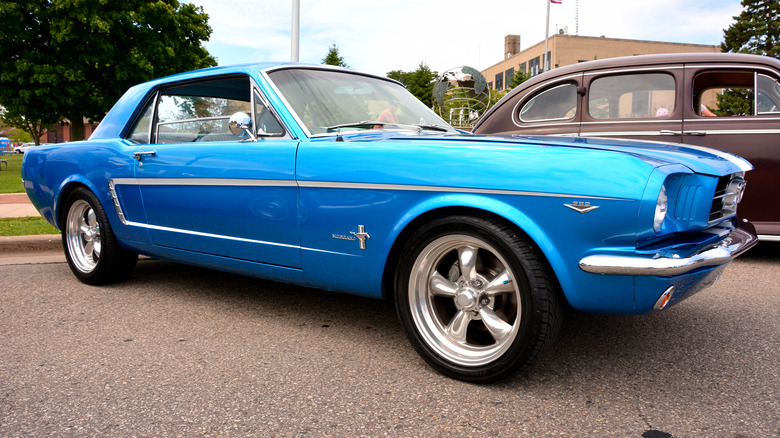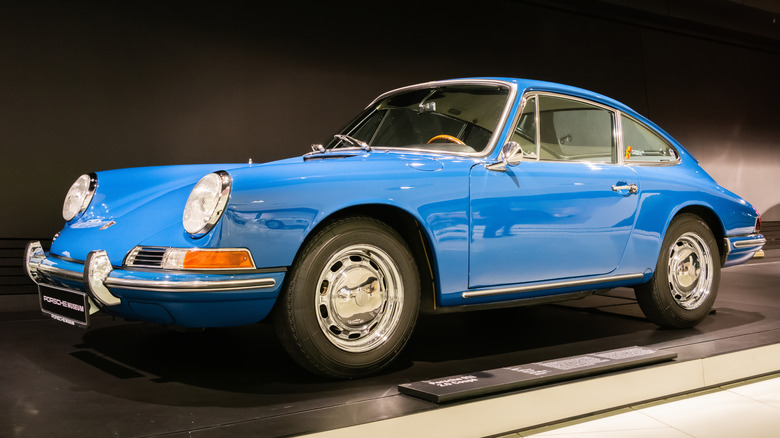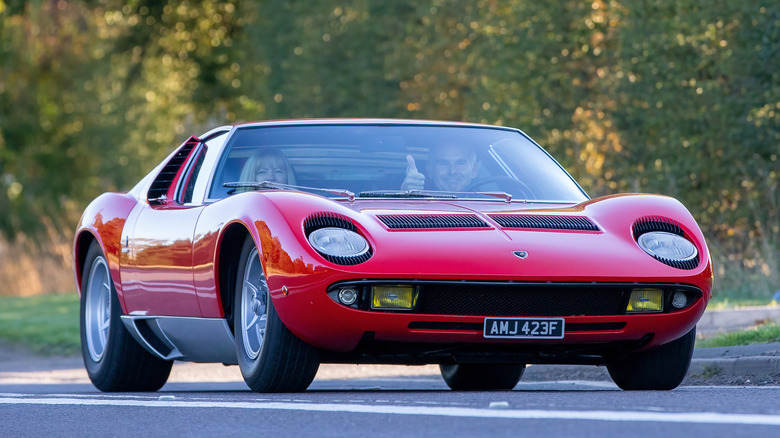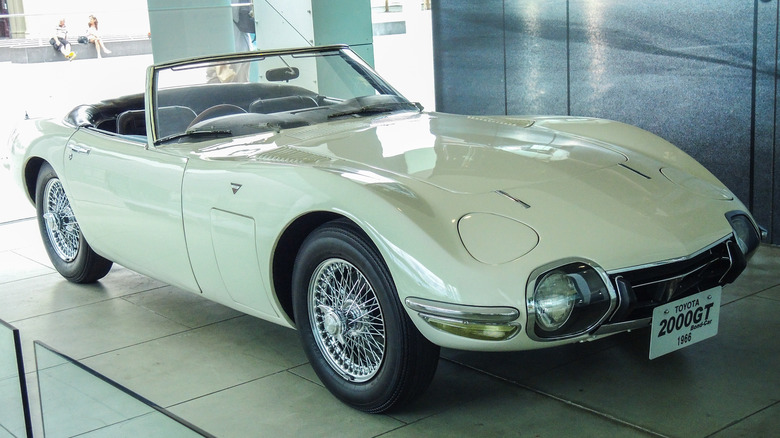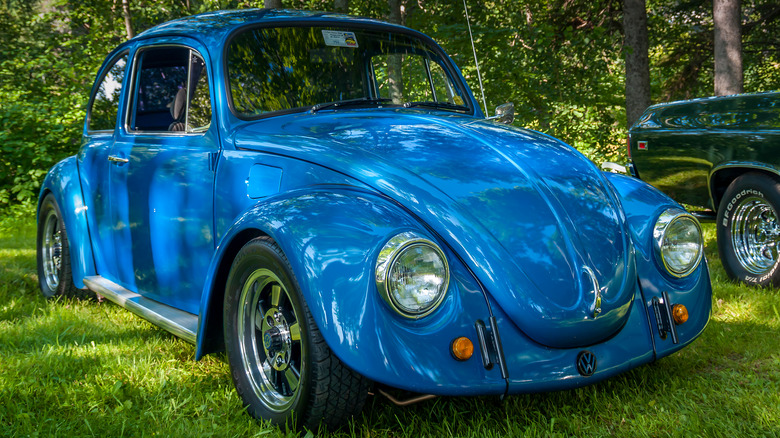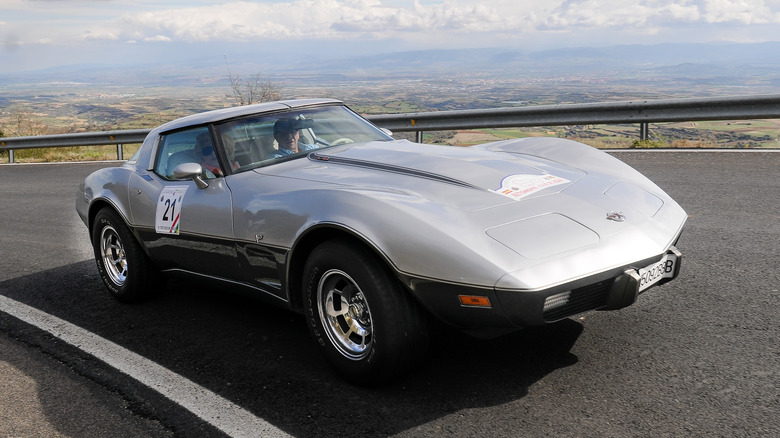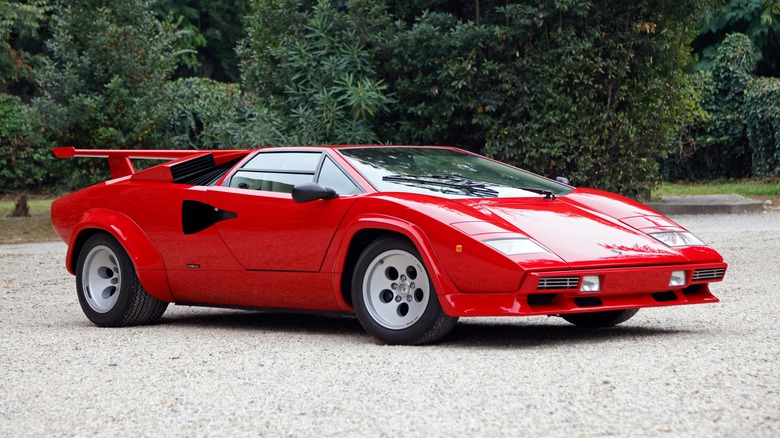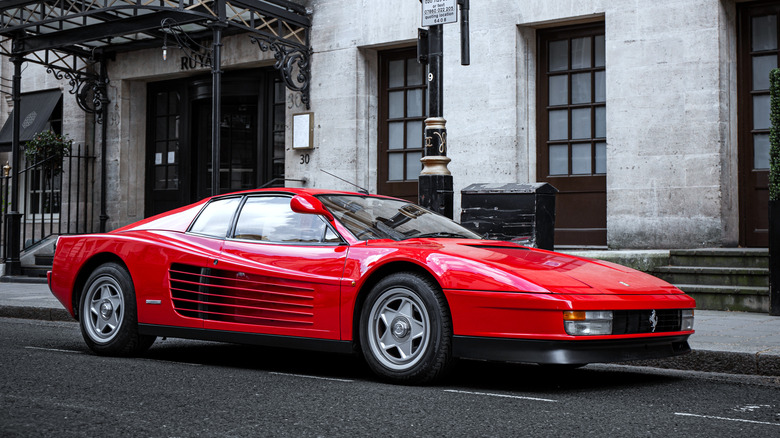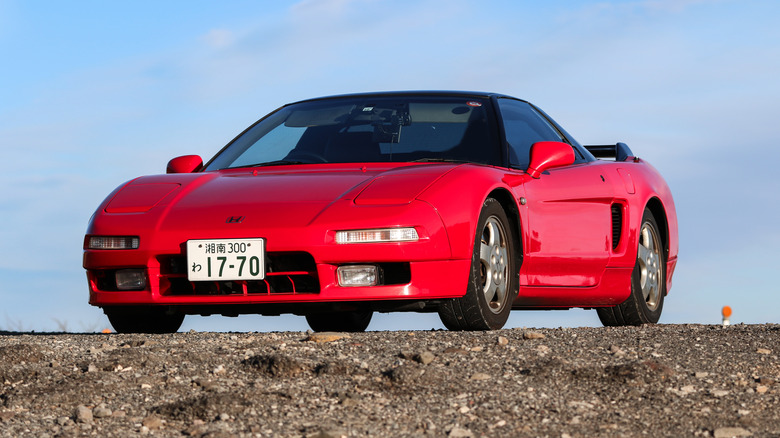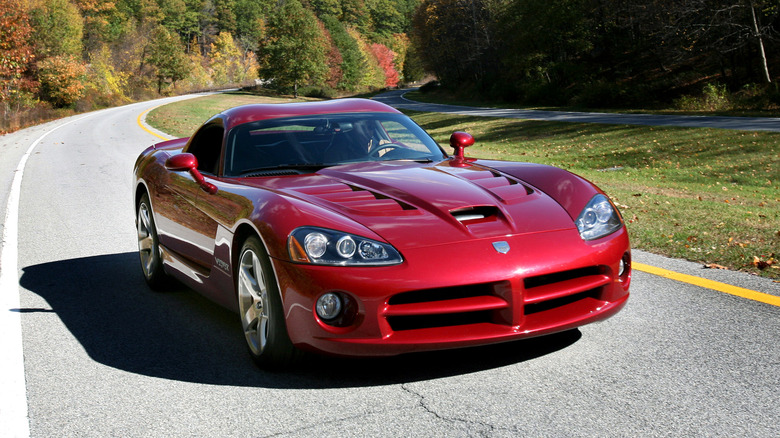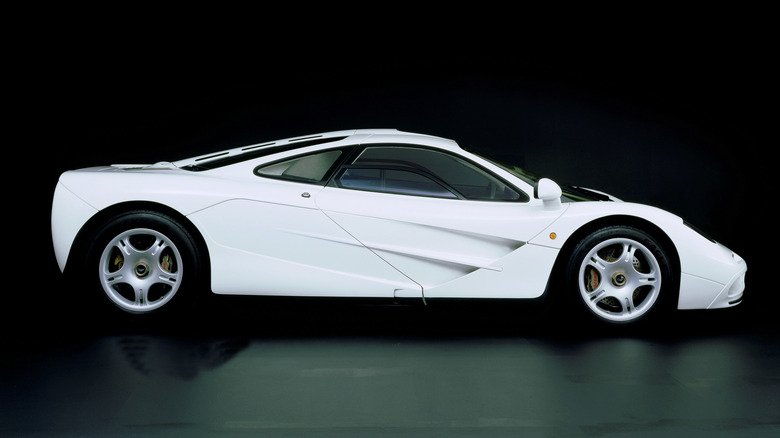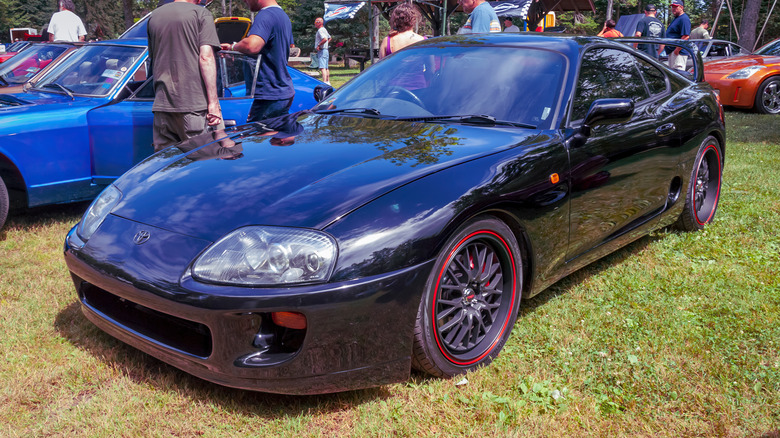15 Cars That Became Instant Classics
The automobile has become an integral part of the human experience and can be seen as so much more than a simple means of getting from A to B. While a car's role is primarily functional, we become attached to and take care of them, just as we entrust them with our lives regularly. Auto manufacturers understand this, and much effort goes into perfecting their craft, which demands the highest levels of technical expertise and innovative genius. However, some cars stand head and shoulders above the rest as marvels of contemporary design and engineering, and these are the ones that might be called "instant classics."
What makes a car an instant classic? They are the cars that immediately impacted the automotive world due to their innovative qualities, cultural significance, and performance capabilities, and they remain at the forefront of public consciousness to this day. The following cars have left a lasting legacy that helped boost the reputation of their respective brands and were all undeniably classics from the day they first rolled off the production line.
1954 Mercedes-Benz 300SL
Once you have seen the Mercedes-Benz 300SL, it is unlikely that you will forget it. This design classic is the perfect showcase for the quality that Germany could produce, not 10 years since the country was ravaged during World War II.
The Mercedes 300SL's iconic gull-wing doors and innovative design made it an instant classic and a symbol of luxury, which sold well in global export markets. Even as far back as 1956, Sports Cars Illustrated was extolling its virtues as an iconic masterpiece, as well as a proficient "pace-setter and style-setter." It was also a technological trailblazer, pioneering fuel injection and featuring a side-mounted engine that lowered its center of gravity.
However, this heritage, quality, and panache come at a price, and few 300SLs exist in the wild. As such, they can command crazy prices at auction, with some examples selling for as much as $1.6 million, around 46 times the price of a brand-new Mercedes C-Class.
1962 Ferrari 250 GTO
The early 1960s were a prolific time for beautifully designed sports cars, including the Jaguar E-Type, Chevrolet Corvette Stingray, and the Shelby Cobra. But one car arguably summed up the spirit of the industry at the time more than any other, and that was the Ferrari 250 GTO.
A highly sought-after and expensive classic, the 250 GTO is renowned for its beauty, racing success, and limited production, contributing to its legendary status among its peers. While primarily a road car, it also performed as well as any racing thoroughbred, with impressive specs even by today's standards. Its V12 engine produced around 300 horsepower, propelling it to 60 mph in about three seconds and giving it a top speed of 174 mph.
While it was certainly fast and undeniably attractive, the 250 GTO was also a reliable machine with exceptional handling, excelling in the endurance races of its day, including the Sebring 12-Hour, 24 Hours of Le Mans, and 1,000-kilometer Nürburgring races. Its distinguished history and scarcity add to its considerable mystique, and prices at auction dwarf even that of the Mercedes 300SL, with one model going under the hammer for $48,405,000 at Sotheby's in 2018.
1963 Aston Martin DB5
Many of us first laid eyes on the Aston Martin DB5 as the chosen vehicle for Sean Connery in his second James Bond movie, "Goldfinger." This was one of the first "movie cars" where the automobile played a vital role, predating "Chitty Chitty Bang Bang" and "Herbie the Love Bug" by four years.
With its fared-in headlamps, wire wheels with knock-off hubcaps, chrome accents, and multiple air intakes, it balanced a sporty dynamic with effortless class. The interior was equally impressive, with no fewer than seven gauges before the driver, lashings of chrome, and a wooden steering wheel. It was given a 4-liter, straight-six engine, which provided speeds of up to 142 mph and a 0–60 time of just over seven seconds.
Even without the Bond gadgets, which included an oil slick, tire slashers, machine guns, and an ejector seat, the DB5 was nonetheless inspiring. A new model would set you back around £4,175 (by comparison, the average UK house price was £2,748 In 1963). However, thanks to their iconic image, scarcity, and boundless beauty, they can fetch well over a million dollars when in good condition.
1964 Ford Mustang
By now, there have been so many different iterations of the Ford Mustang that it is easy to forget what a groundbreaking and aspirational car it was when introduced in 1964. It was also one of the most attainable performance cars of its era, with Ford reusing many parts from other vehicles to keep costs down. As one of the original "pony cars" (affordable, compact coupes), the Mustang introduced a new generation of sports cars.
Four years before Steve McQueen popularized the model in the film "Bullitt," the Ford Mustang was already making waves in the driving community. It was immediately available with a wide choice of transmission and engine options, adding variety to its obvious aesthetic qualities, although performance was lackluster by modern standards. The legacy of the Mustang lives on today, and both old and new models continue to inspire fans of the sports coupe segment. Original Mustangs are still relatively affordable at around $30,000 for a well-looked-after example.
1964 Porsche 911
Porsche's iconic rear-engine 911 first arrived in 1964. And while it has been produced in many different iterations since that early model, it has maintained its distinct design characteristics over the intervening decades. With its wedge-shaped profile, protruding headlamps, and rear-mounted engine, it became an instant design classic with performance to match.
The engine was relatively small within its segment at just 1,991cc but powerful enough, producing almost 73 brake horsepower per liter. While its top speed was more than adequate at 132 miles per hour, it took a while to get there, going from 0 to 60 in around nine seconds.
Naturally, if you compare this to the 911s of later generations, these specifications are almost laughable. However, the original model handled well, looked stunning, and still has legions of enthusiasts wishing to get their hands on one. As such, the earliest models can command over $300,000 at auction.
1966 Lamborghini Miura
The Italians have a long tradition of creating beautiful 12-cylinder sportscars, but to many, the Lamborghini Miura was never bettered. Named after a breed of fighting bull, it had past devotees, including Frank Sinatra, Rod Stewart, and the Shah of Iran. However, as an elite car that attracted celebrities, it easily lived up to the hype.
Often considered the first true supercar, the Miura's mid-engine layout and trailblazing looks captivated Lamborghini enthusiasts from the outset, with highly impressive performance figures. It had a staggering top speed of 174 mph and accelerated from 0 to 60 in 6.7 seconds, considerably raising the bar for the competition.
The Miura is among the most popular legendary sportscars and is often discussed in motoring journals and documentaries. It has left a lasting legacy that has shaped and elevated the Lamborghini brand ever since. If you're looking to buy one today at an auction, be prepared to fork over $1.5 million on average.
1967 Toyota 2000GT
The producers of the James Bond film franchise quickly realized the draw of the sportscar since the DB5 in "Goldfinger," and it must have been easy to choose a Japanese equivalent for "You Only Live Twice." The Toyota 2000GT was likely the result of the company's desire to compete with the exquisite cars coming out of Europe at the time, and, quite frankly, it nailed it.
Here, Toyota took the elongated fastback shape of the Jaguar E-Type, sharpened it up with more angular features, added some cool pop-up headlamps, and completed it with a vinyl trim and a polished rosewood dash. Beyond this stylish visage was an admittedly modest 1,988cc inline-six engine that produced a mere 148 bhp but would propel it to a lackluster 137 mph, with a 0–60 time of 8.4 seconds.
Only 351 2000GTs were built in three years of production, which has left them highly collectible and sought after. This desirability is evidenced by their resale value, with some bought for over a million dollars.
1968 Volkswagen Beetle
While it may not be among the most collectible, valuable, or flashy cars to become an instant classic, the Volkswagen Beetle remains one of the most instantly recognizable cars ever built by its silhouette alone.
The Beetle's distinct design by the legendary Ferdinand Porsche and its practicality and affordability made it immediately appealing and an icon of the automotive world. It was soon to become known for its build quality, reliability, and low fuel consumption, making it a favorite among economically-conscious motorists.
Such was its lovable looks and popularity that the rear-engine "Bug" got picked up by Disney to star in its own successful movie franchise as "Herbie," and it remains a fixture on public roadways to this day, with many international fan clubs and annual enthusiast events. There is even a modern iteration of the Beetle, which, while charming and successful, lacks the endearing appeal of its original 1968 counterpart.
1968 Chevrolet Corvette Stingray
Not to be outdone by the European and Japanese long-hooded luxury coupes, Chevrolet had its own ideas, which materialized as the 1968 Corvette Stingray. This third generation of the popular Corvette introduced the iconic "Coke bottle" shape and is considered a classic of the American sports car segment.
Unlike 1963's "Sting Ray" model, which was notable for its split rear window and tapered rear, Chevrolet went back to the drawing board for 1968, condensing its name to "Stingray." The resulting car was pure muscle, with a 5.7-liter V8 power unit that produced 370 horsepower, with the option to upgrade to a monster 7.4-liter block in the years immediately preceding the nation's switch to unleaded fuel and lower octane solutions.
Despite its powerful engine, the Corvette exuded elegance, and its profile informed subsequent designs until 1984 when a more contemporary, boxier solution was required. As such, the original, trailblazing 1968 "Vette" remains a highly aspirational car to this day.
1974 Lamborghini Countach
The word "countach" is an exclamation that Italians use when they spot something impressive. While a direct translation doesn't seem to exist in English, it is an appropriate moniker for the awe-inspiring Lamborghini Countach, which must have set hearts racing when it debuted in 1974. Even compared to the brand's trailblazing Miura, the Countach was among the most daring designs ever realized, and it only got more striking with each iteration.
The Countach's radical design made it an '80s supercar pinup and an instant classic, despite being largely impractical, with cramped dimensions, heavy clutch and steering controls, and a rear window the size of a paper napkin. All this was seemingly overlooked, as it afforded drivers an effortlessly cool image as they drove around in a space-age wedge with scissor doors, huge air intakes, skyward-facing glass panels, and an engine noise that sounded like you'd angered the Norse gods.
In addition to looking and sounding great, the Countach handled well at speed and was much more than a fashion statement despite its practical shortcomings. It spawned five different versions by 1990, from the more demure LP400 to the fully-fared LP5000. There's even a new hybrid version, the LPI 800-4, so the Countach legacy remains alive and kicking well into the new millennium.
1984 Ferrari Testarossa
To many, the Ferrari Testarossa was the ultimate 1980s supercar. It wasn't the fastest or the best-performing machine, even by Ferrari standards, yet it seemed to perfectly sum up the new age of excess with its flamboyant design and powerful V12 engine. It wasn't long before the Testarossa made many appearances on posters and in popular culture, eventually becoming a defining feature of the '80s and early '90s automotive era.
The profile of the Ferrari Testarossa is undeniably beautiful. Ferrari's longtime designer, Pininfarina, stepped up to the challenge by adding the distinctive side-strakes that channeled air into the rear-mounted engine compartment. Its bodywork was mostly aluminum to keep weight down, and its interior was sumptuously clad in leather. It was technologically advanced, with an engine that featured Ferrari's first four-valve-per-cylinder configuration and electronic fuel injection, capable of producing 390 bhp and a top speed of 180 mph.
The Testarossa represented a time of hand-crafted, lovingly executed Ferraris before the marque was forced to join the ranks of sculpted, technically advanced supercars of the late 1990s. As such, it joins the ranks of the F40 and the F355 as one of the last classic Ferraris, and it remains a much-celebrated automotive icon.
1990 Acura NSX
While the rest of the world knew it as a Honda, in the U.S. market, this mid-engine supercar was known under the Acura marque. To many of us, this seems more appropriate, as Acura is the name of the luxury arm of Honda's product line, and the NSX is special enough to be included among its best.
The Acura NSX combined typical Honda reliability with exotic car performance, challenging the established European brands and American muscle cars of its day. It wasn't overstated, with its fared-in spoiler and clean, uninterrupted lines, although it was notable for its two large air intakes on either side. This gave it the appearance of a Japanese alternative to the Ferraris of its day, which is precisely what it was. However, some argued that it was more practical, comfortable, and far better value for money.
The NSX's evident quality was matched by its blistering performance. It could reach 60 mph in under three seconds and hit a top speed of 191 mph. It is, therefore, no wonder that this car is still discussed with reverence in sportscar circles and fetching prices of well over $100,000 at auction.
1992 Dodge Viper
The turn of a new decade saw a change in how supercars were designed, and we started to see more flowing, sculpted profiles that were distinctive from the angular lines that characterized cars of the 1980s. Leading the charge for these was the Dodge Viper, which in 1992 was groundbreaking in its appearance.
The Dodge Viper was a modern interpretation of the classic American muscle car, and the Viper's aggressive styling, along with its powerful V10 engine, made it an instant classic. So progressive was the thinking behind the Viper that its creators eschewed standard fixtures, like door handles or windows, choosing to focus instead on its power and performance. Luckily, it had these in spades, and driving a Dodge Viper was a transformative experience, thanks to its V-10, 488 cubic-inch power unit. The car covered a standing quarter-mile in under 14 seconds and hit a top speed of 165 mph once you had mastered the weirdly off-center location of its foot pedals.
There were five generations of Dodge Viper up to its discontinuation in 2017, but the originals are among the most sought-after, with only 6,709 produced until 1996. It is, therefore, expectedly pricey, with one example sold by Bonhams auctions for $285,500 in 2020.
1992 McLaren F1
Few cars have made such an impression on supercar folklore as the McLaren F1. It remains a remarkable machine that rewrote the rule book on the capabilities of the modern sports car, paving the way for later 250-plus mile-per-hour models like the Koenigsegg Agera and Bugatti Veyron.
Having been clocked at well over 200 mph in initial testing, it was later recorded as hitting a record 240 mph in 1998, coincidentally, the same year it went out of production. However, it was so much more than a road rocket. It had a unique seating configuration with the driver sitting in the center and two passengers sitting behind on either side. It had scissor doors like the Countach, a titanium and carbon-fiber construction, and even allowed for conveniences like electric mirrors and windows, air conditioning, and a leather interior.
With its central driving position and record-breaking top speed, the F1 redefined the supercar category and set a new precedent in technical and engineering integrity. As such, this rare icon sells for far more than its original $800,000 asking price, with one recently going under the hammer for $20.5 million.
1993 Toyota Supra
After the success of the 2000GT, it was clear that Toyota knew a thing or two about designing front-engine, fastback sports cars. Still, it was over a quarter-century later when it gave us its first tangible equivalent in the form of the fourth-generation Supra.
In recent years, the Mk IV Supra gained fame through its appearance in the "Fast & Furious" franchise, but well before that, its turbocharged performance made it a tuner car legend. It was initially available with two engine options, including the superior three-liter 2JZ-GTE that delivered 320 horsepower, 100 more than its stock counterpart. This enabled the 1992 Supra to outperform many of its contemporaries, such as the Acura NSX, Porsche 928, and the Mazda RX-7. It was often the more affordable and reliable option as well, making it one of the most appealing models within its segment.
To this day, the Supra is widely discussed among car tuning enthusiasts and on racing forums, and it lives on in numerous video games and movies. It feels like it never really went away, and this adds value to an already popular vehicle. As such, you can expect to pay over $63,000 on average for a fourth-generation model in good condition.
